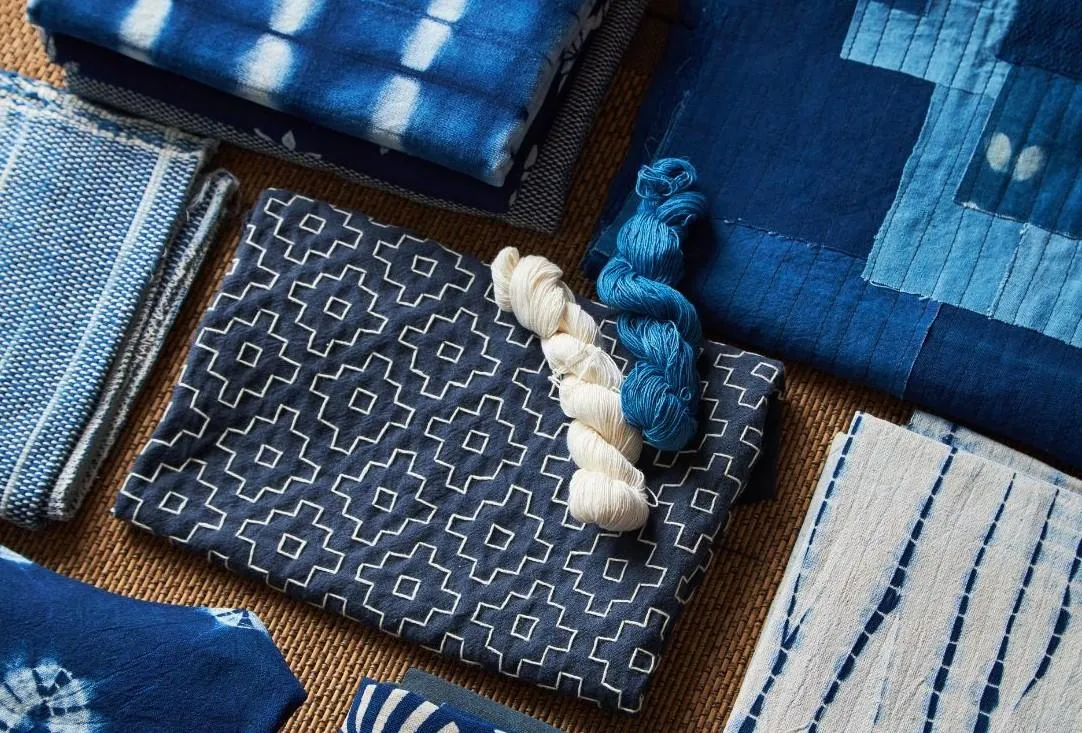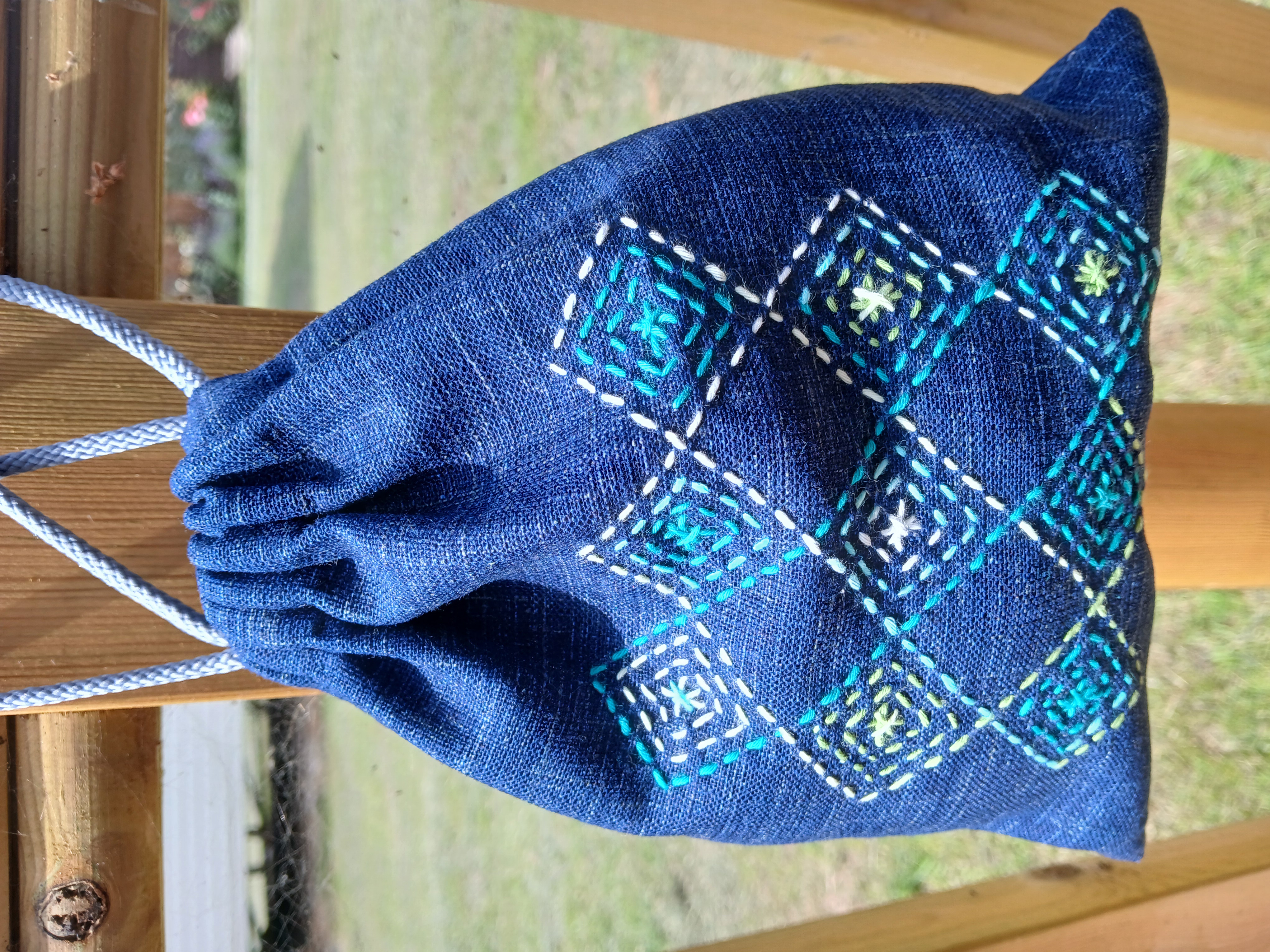
Sashiko Secrets: Stitching Together Tradition and Sustainability
What if a simple stitch could tell stories, preserve history, and help save the planet? That’s the magic of sashiko, a traditional Japanese embroidery technique that’s equal parts functional and beautiful. These little running stitches, known for their intricate patterns and meditative pace, have come a long way from their humble beginnings. What started as a practical way to extend the life of clothing has evolved into a symbol of sustainability, cultural heritage, and artistic expression. Today, sashiko weaves together tradition and modern eco-consciousness in ways that are as inspiring as they are practical.

The Origins of Sashiko
Sashiko, which translates to “little stabs” (an apt name for its rhythmic running stitches), traces its roots back to rural Japan during the Edo period (1603–1868). This wasn’t a time of abundance for the average farmer or fisherman. Their clothing, often made from sturdy yet simple indigo-dyed fabrics like cotton or hemp, had to endure tough daily labour. Sashiko emerged as a necessity, a way to reinforce and repair garments using small, even stitches.
But sashiko wasn’t just about making clothes last longer. It was also a way to maximize resources in a thrifty, resourceful culture. Families would quilt together layers of worn fabric, creating thicker, warmer clothes for harsh winters. Over time, what began as purely functional stitching grew into an art form. Patterns inspired by nature, geometry, and daily life adorned jackets and futons, turning necessity into beauty.
Beyond its practical uses, sashiko holds deep cultural significance. Many patterns carried symbolic meanings, often tied to themes of health, prosperity, and protection. It wasn’t just fabric being stitched; it was a tapestry of beliefs, wishes, and traditions.

Sashiko Patterns and Their Stories
One of the most enchanting aspects of sashiko is its visual language. Each pattern tells a unique story, often inspired by nature and imbued with meaning. Here are a few of the most beloved designs:
Asanoha (Hemp Leaf)
This star-like pattern, resembling the leaves of the fast-growing hemp plant, symbolizes strength and growth. Traditionally, it was used on children’s clothing as a blessing for robust health and a prosperous future. Even today, its symmetrical beauty continues to captivate modern embroiderers.
Seigaiha (Blue Ocean Waves)
Layered, curved lines that mimic rolling waves make up the graceful seigaiha pattern. It represents peace, calm, and enduring journeys, making it a favorite for both coastal communities and modern sashiko enthusiasts looking to imbue their work with tranquility.

Kikkō (Tortoise Shell)
The hexagonal kikkō pattern takes its cue from the tortoise, a creature regarded in Japanese culture as a symbol of longevity and good fortune. This timeless design often graces items meant to last, a fitting tribute to its namesake’s resilience.
Others to Explore
From geometric grids to intersecting arcs, there’s a sashiko pattern for almost every sentiment or occasion. Whether inspired by clouds, blossoms, or stars, each motif speaks to a shared appreciation for nature’s elegance and the stories etched into daily life.

Modern Sashiko in the World of Sustainability
Fast forward a few hundred years, and sashiko is making waves in the modern world, but for entirely new reasons. Today, this humble stitch has found a home in the sustainability movement, offering creative ways to mend, repurpose, and reduce waste in our throwaway culture.

Visible Mending and Slow Fashion
Gone are the days when a hole in your jeans meant they were destined for the bin. With visible mending, sashiko transforms rips and tears into artistic statements. Instead of hiding imperfections, they’re celebrated, turning flaws into features. This has made sashiko a darling of the slow fashion movement. Imagine repairing your favourite jacket with striking white asanoha stitches or patching up a tote bag with a flowing seigaiha wave.
Upcycled Home Décor
Sashiko has also moved beyond clothing. From hand-stitched cushions to framed embroidery art, it’s making its mark in home décor. The technique doesn’t just add visual appeal; it brings a sense of history and intentionality to living spaces.
The Meditative Craft Movement
There’s something profoundly soothing about sashiko’s repetitive stitches. It’s no surprise that many have embraced it as a mindfulness practice. DIY kits and workshops are popping up worldwide, inviting crafters to slow down, focus, and connect with a tradition that’s centuries old.
Art as a Message
Several contemporary artists use sashiko to make statements about sustainability and consumerism. By repurposing old textiles and incorporating meaningful patterns, they draw attention to the beauty of reuse, urging us to rethink how we treat our belongings.
Why Sashiko Resonates Today
It’s easy to see why sashiko strikes a chord in today’s world. For starters, it aligns perfectly with the growing desire for mindfulness, craftsmanship, and living more sustainably. Repairing something with sashiko stitches isn’t just functional; it’s a declaration that you value the things you own.
Plus, sashiko bridges the gap between tradition and modernity. When you sit down to stitch, you’re participating in a practice that’s both ancient and undeniably relevant. Whether you’re restoring a pair of ripped jeans or stitching a wall hanging for your living room, you’re joining a legacy of care, intention, and artistry.
Getting Started with Sashiko
Eager to give sashiko a try? You don’t need much to get started. A few essentials include sashiko thread (thicker than regular embroidery thread for durability), an embroidery needle, and scrap fabric. While indigo-dyed cotton is traditional, any material will do.
Choose a pattern that speaks to you. Don’t worry if your stitches aren’t perfect; sashiko celebrates imperfection. The act of stitching is as meaningful as the end result.
Why not book one of my workshops, or order a pattern or kit and have a go at home?

Stitching for the Future
Sashiko isn’t just an embroidery technique; it’s an ethos. It’s about cherishing what you have, finding beauty in the imperfect, and resisting the pull of disposable culture. Each stitch is a connection to history, to sustainability, and to yourself.
Whether you’re inspired by its artistry, its environmental impact, or its cultural depth, sashiko offers a compelling reason to pick up a needle and thread. It’s not just about mending fabric; it’s about mending our relationship with the things we own and the world we live in.
Go ahead, grab some thread, and start stitching. You’ll soon discover that sashiko isn’t just about what you create; it’s about the stories you continue to stitch into life.